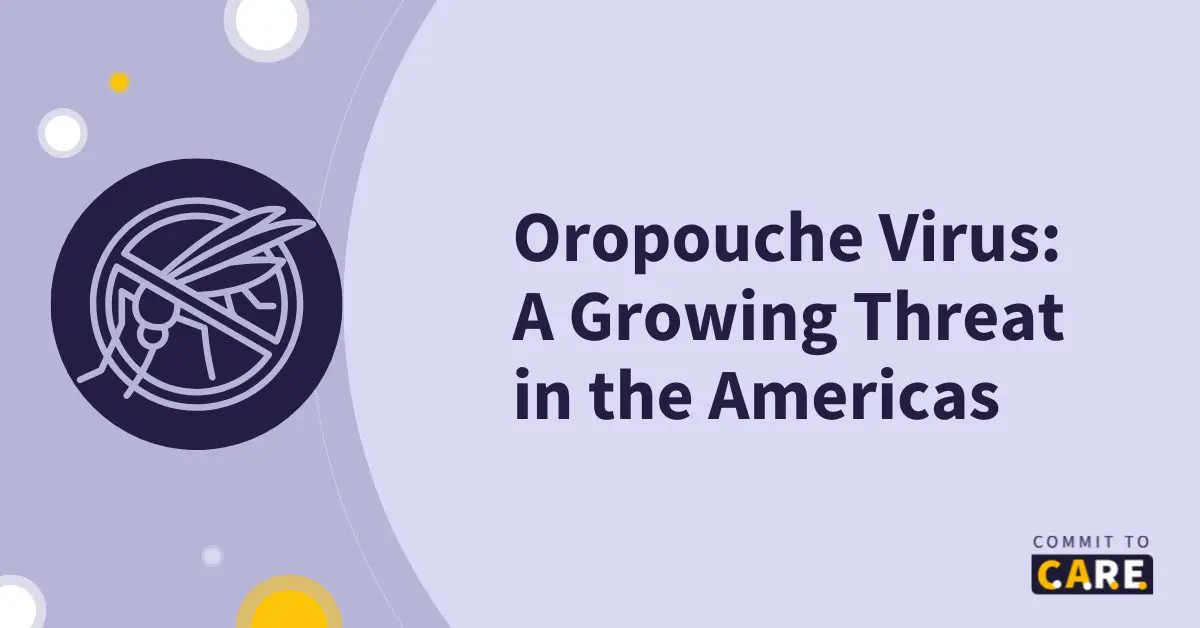Oropouche Virus: A Growing Threat in the Americas

By Kenneth F. Martinez (CAPT USPHS Ret). President and Founding Board Member of The Integrated Bioscience and Built Environment Consortium (IBEC)
As diseases once considered distant threats become increasingly prevalent in the Americas, the Oropouche virus (OROV) has emerged as a growing concern. The Pan American Health Organization (PAHO) has issued an epidemiological alert, urging countries to strengthen surveillance and laboratory diagnosis for this zoonotic disease. The spread of the Oropouche virus has highlighted the critical need for preventive measures and awareness.
The Role of Climate Change in Vector-Borne Diseases
Climate change alters the distribution and abundance of vector-borne diseases like Lyme disease and West Nile virus. Because of warmer weather and shorter winters, the favorable climate for the ticks and mosquitoes that carry these diseases is shifting in geographic location: areas that were not previously suitable for them now are.
Tick-borne diseases make up about 80 percent of reported vector-borne diseases in the U.S. and have increased over the last 20 years. Ticks are spreading to new areas, and their seasonal activity is expanding, prolonging their exposure to humans. Similarly, climate change is impacting mosquito populations, which carry diseases like West Nile virus, dengue, Zika, and chikungunya.
The Pan American Health Organization (PAHO) recently issued an epidemiological alert regarding the Oropouche virus. Historically, OROV infections were considered mild, but the recent geographic spread and detection of more severe cases have raised concerns. PAHO has called for enhanced surveillance and the implementation of laboratory diagnostic tools to understand the virus’s evolving behavior and its potential public health impacts.
Understanding the Oropouche Virus
The Centers for Disease Control and Prevention (CDC) followed PAHO’s alert with a Health Alert Network (HAN) Advisory, notifying clinicians and public health authorities of increased Oropouche virus cases in the Americas.
As of August 1st, 8,000 cases had been reported, primarily in South America. However, infections are also spreading to countries where OROV has not been previously detected. Dozens of travel-related cases have been reported in the United States and Europe. In the U.S., 94 travel-associated cases have been documented, with 90 occurring in Florida. Importantly, no local transmission has been detected in the U.S. so far.
Transmission occurs in forested areas between mosquitoes and non-human vertebrate hosts, such as sloths, non-human primates, and rodents. Humans can become infected while visiting these areas and are often responsible for introducing the virus into urban environments. In urban settings, infected humans develop sufficient viremia to serve as amplifying hosts, with transmission primarily occurring through biting midges (Culicoides paraensis) and potentially certain mosquitoes (Culex quinquefasciatus).
Preventive Measures and Recommendations
PAHO and the CDC emphasize the importance of preventive measures to reduce the spread of zoonotic diseases like Oropouche virus:
- Use insect repellents approved by regulatory authorities.
- Wear protective clothing covering arms and legs.
- Install fine mesh mosquito nets for sleeping areas.
- Conduct testing for travelers returning from impacted areas who exhibit symptoms consistent with Oropouche virus symptoms.
Most individuals recover in five to seven days, but severe cases with aseptic meningitis and rare fatalities have been reported. Complete recovery can take several weeks in some instances.
However, there has also been an increased awareness of the possible risk of vertical transmission (e.g., from gestational parent to fetus during pregnancy) and associated adverse effects on pregnancy. The CDC states that this “type of spread has been associated with poor pregnancy outcomes such as fetal deaths, stillbirths, and birth defects. The risk of an infected pregnant person passing the virus to their fetus is not currently known.”
This highlights the importance of prevention measures to mitigate the additional spread of the virus and its potential importation into unaffected areas, including the United States.
Healthcare providers are encouraged to follow the CDC’s Health Alert Network Advisory for guidance on evaluating and testing symptomatic individuals.
The Bigger Picture: Preventing Zoonotic Diseases
The rise of diseases like the Oropouche virus reflects a broader trend of increasing zoonotic disease threats. Climate change, urbanization, and global travel have created conditions conducive to the emergence and spread of such diseases. Proactive measures, community education, and increased surveillance are essential to limiting their impact.
For more on related topics, explore our resources:
Shoutout to Kenneth F. Martinez
We are honored to share this piece of thought leadership by Kenneth F. Martinez (CAPT USPHS Ret), President of IBEC. Ken’s extensive experience with the CDC and his expertise in biological agents, infectious diseases, and bioterrorism agents provide invaluable insight into the challenges posed by vector-borne diseases and climate change.
3https://emergency.cdc.gov/han/2024/han00515.asp
4https://www.yahoo.com/news/oropouche-virus-emerging-threat-raising-194229908.html?guccounter=1
5https://www.cdc.gov/oropouche/data-maps/current-year-data.html
